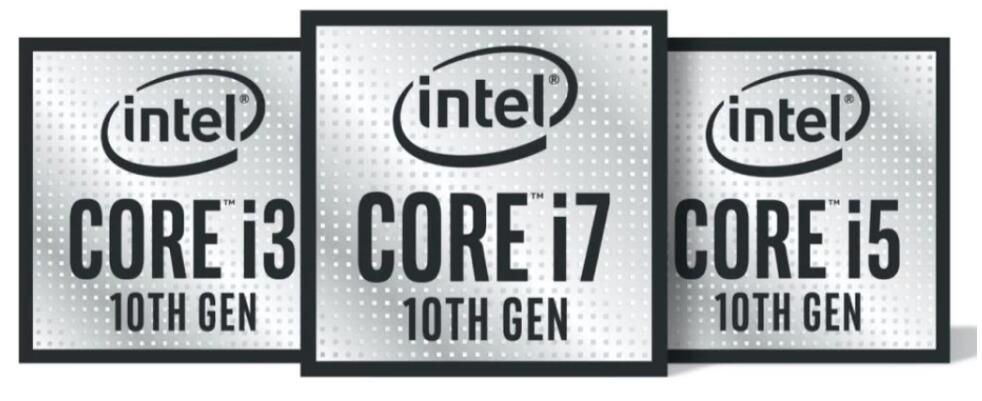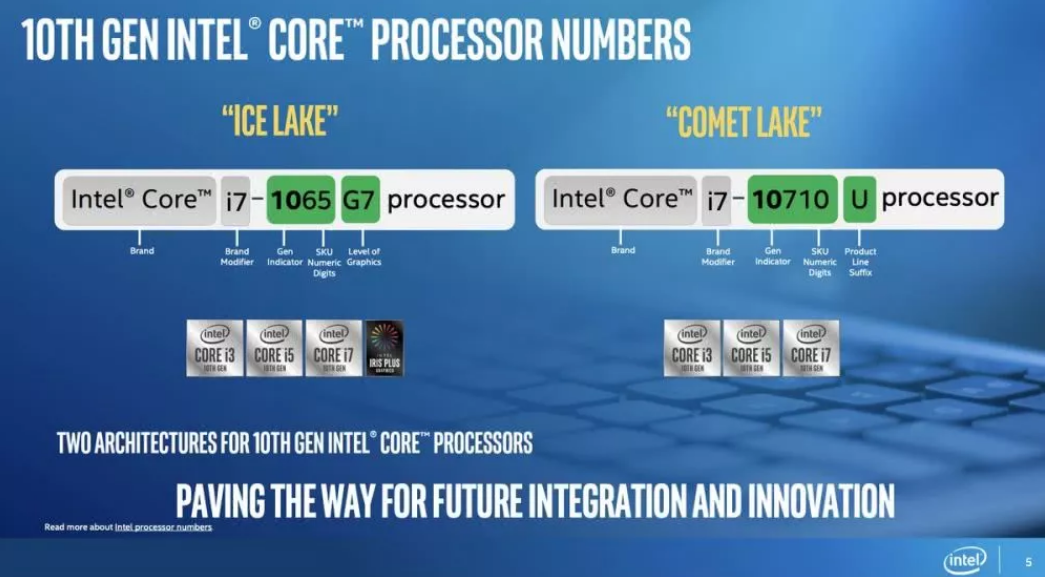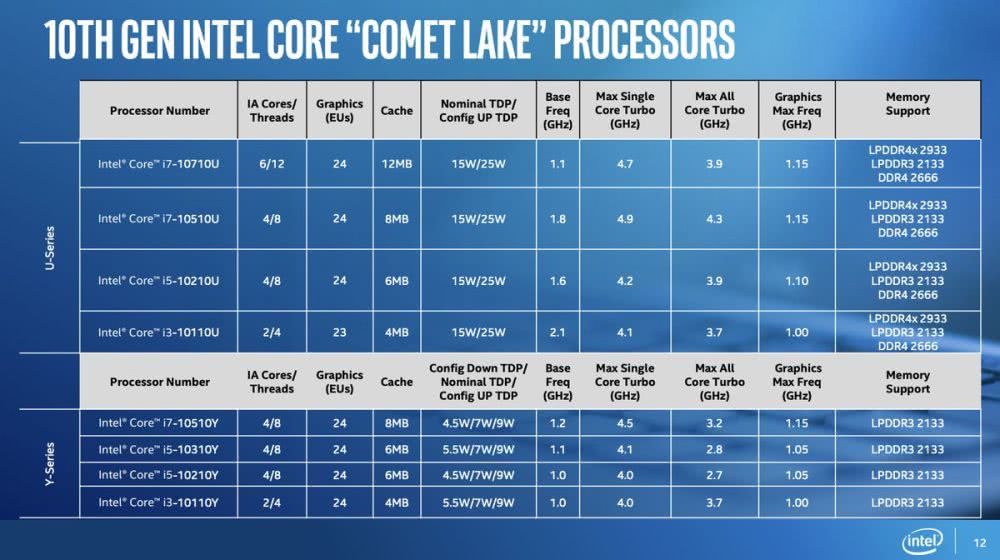Intel has introduced a range of new processors to add to its 10th-generation lineup.Today's announcement focuses on its Comet Lake CPU, leading to more Y and U cpus being decoded.

All eight of these new 10th-generation processors use Intel's 14nm process instead of Ice Lake's 10nm process.That in itself does not make them bad.Notably, the all-new Intel core i7-10710u is its first six-core u-series processor, with 12 threads and a higher maximum clock speed than some of Intel's Ice Lake processors. However, the new 14nm chips will lack the advantages of 10nm chips.Overall, these may not be as efficient or have the same battery life as the glacial lake chip.None of them have Intel's impressive integrated graphics card, the Gen11, which claims to handle relatively smooth games at 1080p resolution.Comet Lake USES a previous version of its integrated graph, indicating a missing "G" followed by a number in the model name.Basically, unless you're buying a laptop with a dedicated graphics card from AMD or Nvidia, these 10th-generation cpus won't make it on their own, depending on your favorite game. If you're confused by the very strange naming conventions of the 10th generation, Intel makes it even messier.Tell them the separate cues in their model names;You just need to know what to look for.

My colleague Sean Hollister wrote an article that will help you completely break down another reason why the 10th-generation glacial lake chip is better than the first.For these Comet Lake cpus, you can solve these problems by looking for "U" or "Y" in the model name, as shown in the figure above.Intel's Ice Lake processors are also technically u-series and y-series, but you won't find them in the name.Instead, Intel distinguishes those by attaching "g-numbers" to the end, indicating that they have new Iris Plus graphics.
AnandTech's Ryan Smith also noted on Twitter that the new U series chips will support fast LPDDR4x memory in laptops.So go ahead, apple and others, keep the DDR3.Intel should also keep these new u-series and y-series chips consistent, as well as support for Thunderbolt 3 and wi-fi 6 in other 10th-generation processors.Some of the processors will appear on machines labeled "Project Athena," a guarantee that they will last up to nine hours after being reviewed and verified, according to the company's press release.

You may be wondering where to find these cpus.Intel says it will enter the machine market before the holiday season.While its more efficient, high-performance 10nm chips will fall into more expensive machines, these new processors could lead to an influx of slightly cheaper superbooks, two-in-one laptops and other ultra-thin PCS, and possibly even future Surface and MacBook products.
